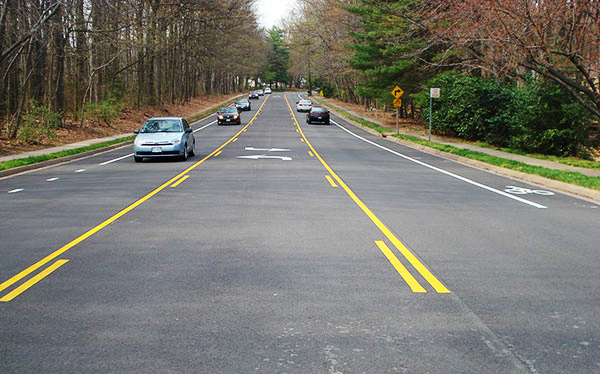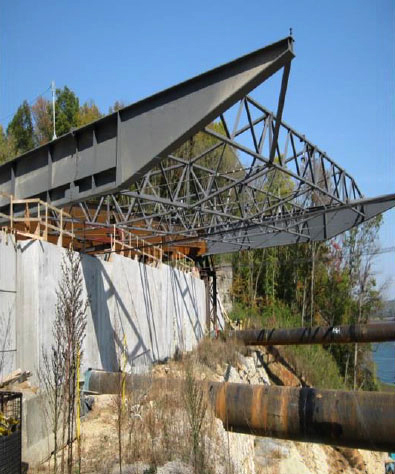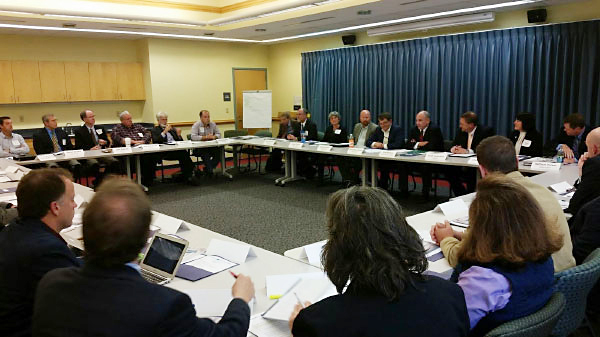October 29, 2015
Innovation of the Month: Road Diets
Road diets are a low-cost lane reallocation solution that transportation planners are using to enhance safety for pedestrians, bicyclists and motorists while creating more livable community spaces.
The Maryland State Highway Administration has two road diet projects under construction. The agency is repurposing the road to add bicycle lanes on Maryland Route 170 from MD 648 to MD 762 and on U.S. 1 from U.S. 1 Alternate to the Baltimore city line.
The Michigan Department of Transportation developed a checklist for road diets to assure smooth administrative procedures. The agency has used road diets totaling 54.1 miles on 60 state corridors and 88.3 miles on 94 local corridors.
The Virginia Department of Transportation’s road diet on Soapstone Drive in Reston features three different reconfigurations to accommodate suburban and rural sections. The road diet reduced crashes by 70 percent and improved access to a nearby transit station for bicyclists.
Read Road Diet Case Studies for more information on planning and implementing road diets.

Road diet on Soapstone Road in Reston, Virginia. Credit: Richard Retting
Illinois Executes Programmatic Agreement
The Illinois Department of Transportation and FHWA executed a new programmatic agreement for categorical exclusions on October 14 to streamline the environmental review process on highway projects. The agreement describes the two agencies’ responsibilities in the decision-making process for categorical exclusions, actions that don’t involve significant environmental impacts. It uses regulatory provisions that provide the Illinois DOT with additional capacity to approve categorical exclusions on FHWA’s behalf.
Indiana Uses Bridge Launch for First Time
On October 22, construction crews successfully launched 110 feet of fully assembled structural steel for the cable-stayed bridge at the East End Crossing of the Ohio River Bridges project connecting Indiana and Kentucky. It was Indiana’s first bridge launch, an accelerated bridge construction technique, and one of only a few in the United States. Crews used hydraulic strand jacks and chain link rollers to push the superstructure into place. Two more launches will push 600 feet of assembled bridge superstructure into place. The benefit of launching is that the superstructure is built on the ground, improving safety and quality and cutting construction time.

Indiana’s first bridge launch is on the Ohio River Bridges project.
Iowa First to Use South Korean Ultra-High Performance Concrete Mix
The Hawkeye Bridge project near Fairbank, Iowa, is the first in the United States to incorporate an ultra-high performance concrete mix design developed in South Korea. On November 10, the Buchanan County Secondary Roads Office will host a ribbon cutting at the bridge, as well as at West Bridge, a Federal-Aid Highway Program project Buchanan County administered for the city of Hazleton. Korea Institute of Construction Technology, University of Iowa, Iowa Department of Transportation and FHWA representatives plan to attend the events.
Maine Hosts Beyond Traffic Roundtable
The Maine Department of Transportation and FHWA held an October 22 roundtable with FHWA Administrator Gregory Nadeau to discuss national transportation system trends outlined in the U.S. Department of Transportation’s Beyond Traffic 2045 framework. Representatives of the Maine State Transportation Innovation Council and other stakeholders discussed innovation deployment successes in the state. The roundtable also covered freight issues, bicycle and pedestrian access, workforce development and economic growth.

Maine transportation stakeholders discuss national trends at a Beyond Traffic roundtable.
New Jersey Holds Inactive Projects Workshop
The New Jersey Department of Transportation held an October 15 workshop for local agencies on inactive Federal-Aid Highway Program projects as part of the EDC-3 stakeholder partnering effort. Participants from the New Jersey DOT, metropolitan planning organizations, counties, municipalities and FHWA discussed inactive project causes and potential solutions. They created several working groups to evaluate why projects may not be awarded, billed and completed in a timely manner and to develop recommendations to improve the project delivery process.
Utah Uses Story Maps to Make Information Accessible
The Utah Department of Transportation uses story maps as a tool to communicate transportation plans to the public. A story map is a collection of interactive maps, tied to the agency’s UPlan geospatial data collaboration tool, that display information with text descriptions, video clips, photographs, charts and graphs. It’s designed to put technical information in a narrative and visual format to make it meaningful to the public. The Utah DOT is experimenting with story maps to describe the vision and plans for the
I-15 and U.S. 40 corridors.
FHWA Offers Expertise on UHPC Connections Technology
FHWA experts discussed the benefits of ultra-high performance concrete connections for prefabricated bridge elements at two recent events. They met with Minnesota Department of Transportation staff at the Pulaski Skyway project in Newark, New Jersey, to explain how UPHC technology is being used on the project. They also conducted a workshop on UHPC connections for the Vermont Agency of Transportation and private sector representatives. Vermont plans to deploy the technology for the first time in 2016.
FHWA Helps NCHRP Accelerate Research Results
FHWA is participating in National Cooperative Highway Research Program Project 20-44, an effort to accelerate implementation of NCHRP research results. A process improvement task force is reviewing potential methods to speed up the consideration and application of results. The panel is considering using FHWA Technology and Innovation Deployment Program activities—such as the Every Day Counts initiative and Accelerated Innovation Deployment Demonstration program—to support quick implementation of priority, market-ready results.


